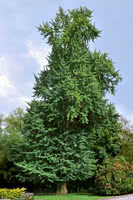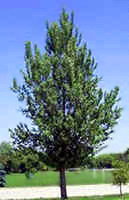Mon-Fri 9am - 5pm Mountain time
Ginkgo Biloba vs Hill Poplar
Ginkgo biloba
Populus x Hill
NOT AVAILABLE THIS SEASON - MIGHT RETURN
CUSTOM GROW
The Ginkgo Biloba is regarded as one of the most distinctive and beautiful of all the deciduous trees, and has remained genetically unchanged for millions of years. Its beautifully fan-shaped leaves develop a clear yellow colour in fall. Graceful and attractive year-round, Ginkgo is the perfect conversation starter in your yard.
Hill Poplar is a hardy, fast-growing tree with a narrow crown. Hill Poplars function well as a privacy screen or windbreak.
This attractive, long-lived shade tree is a great choice for home and commercial consumers alike, as it requires little pruning or maintenance care.
Hill Poplar has largely been replaced by more desirable hybrid poplar varieties that are more resistant to disease.
Ginkgo Biloba Quick Facts
Hill Poplar Quick Facts
Toxicity: Uncooked nuts in large quantities
In row spacing: 2.4 m (8 ft)

